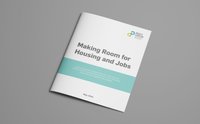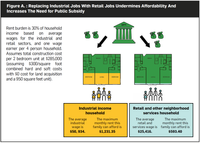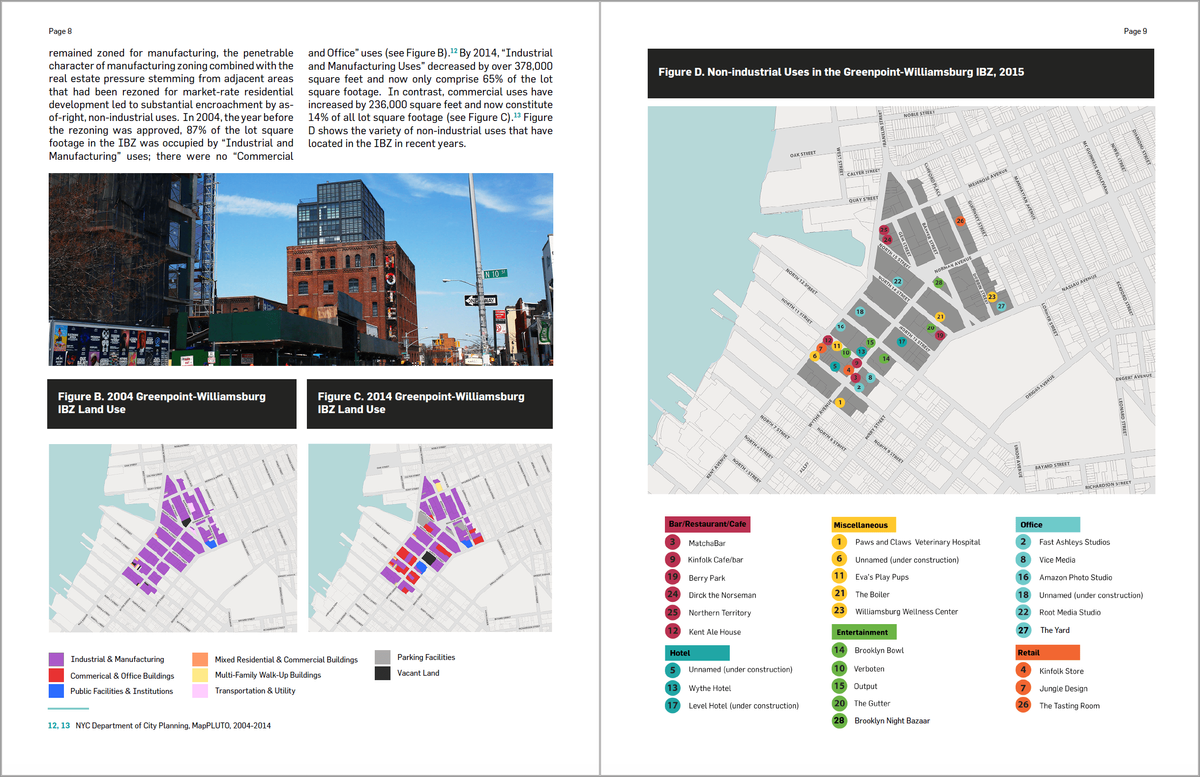This report examines how rezoning industrial areas to provide space for housing may actually undermine housing affordability if high-wage industrial jobs are replaced with low-wage jobs in retailing and neighborhood services.
To avoid pitting housing against jobs, the study recommends the creation of Industrial Employment Districts, a new type of zoning that would strengthen existing Industrial Business Zones (IBZs). Reducing real estate speculation and allowing greater industrial density in solidly industrial areas would give business owners the security they need to invest in new technologies that improve competitiveness, create jobs, and promote climate resiliency.

New York City needs strategies and new land use tools that both encourage affordable housing and also promote industrial stability. As it stands, the City’s current manufacturing zones, including even the Industrial Business Zones, encourage real estate speculation by allowing many non-industrial uses such as big-box retail, self-storage facilities, and hotels. This is exacerbated when the City decides to rezone an industrial area, which may trigger real estate speculation in adjoining areas that initiates a downward spiral of displacement, disinvestment, and job loss for industrial businesses.

Findings
The study illustrates how “housing affordability” is determined not only by what a unit of housing costs to build and operate but by how much income a prospective renter has available to spend on housing. Even if rezoning leads to the creation of new jobs in retailing and other neighborhood services, those jobs provide relatively low wages. In Brooklyn and Queens, for example, the difference in wages between the two sectors is so great that public subsidies for housing construction would have to increase by as much as 50% to make the housing affordable for a retail and neighborhood services worker over an industrial worker.
The study also examines the challenges of mixed residential/industrial buildings and districts which might seem like a “silver bullet” to reconcile the city’s housing and job retention challenges. The study found that creating new mixed use districts is likely to be extremely difficult and present financial, operational and enforcement challenges that need to be addressed before any further zoning changes are proposed. While there is value in mixed use districts, the City’s current MX zoning (which allows both uses without any limitations or balancing mechanisms) fails to preserve the mix and lays the groundwork for a transition to residential uses.

Recommendations
The City should create Industrial Employment Districts (IEDs) a new type of zoning that limits non-industrial uses and creates safe-havens that encourage the reinvestment necessary to create jobs, remediate a legacy of environmental degradation, and pursue new technologies and practices that promote sustainability.
The City should focus on preserving those mixed use areas that already exist. New mixed use development should not be encouraged in existing solid industrial areas but in areas where there are significant vacant sites, strong community support and understanding of the challenges, and with appropriate incentives.
